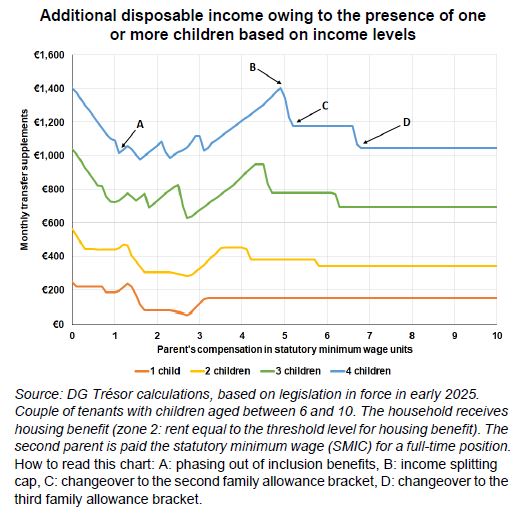The Economic Issues Surrounding Redistribution to Families
Having initially focused on supporting the birth rate, family policy now has three goals: contributing to offsetting family expenses, helping vulnerable families and ensuring a work-life balance. To this end, it has a large number of schemes that are sometimes difficult to understand. It nevertheless carries out significant redistribution from childless families to other families, especially large and single-parent ones.
Since its introduction in the 1930s, family policy has been resolutely directed towards childbirth goals by horizontal redistribution from childless households to those with children. The first major change took place in the 1970s with the start of vertical redistribution from wealthy families to low-income ones. Family policy expenditure now encompasses a large number of objectives, including support for early childhood and gender equality.
Family policy has adjusted itself to socio-demographic changes in recent decades, in particular the increase in women in the workforce and single-parent families.
Today, family policy has three main goals: contributing to offsetting family expenses, helping vulnerable families and ensuring a work-life balance. To achieve its targets, the policy comprises tax schemes (essentially income splitting, the quotient familial), universal or means-tested monetary allowances, increased welfare benefits depending on the age or number of children, and the provision of public childcare services.
The French welfare and tax system now focuses mainly on low-income families, single-parent families and large families for which the poverty rate is higher than for other families. Besides income levels and the number of children, the additional monetary benefits paid for having children depend on their age and birth order. Nevertheless, changes to welfare and tax transfers based on these criteria are not always commensurate with the increase in costs for families. In addition, the "layering" of schemes creates changes in the amount of means-tested benefits paid per child that are difficult to understand (see Chart).
Childcare options conducive to a work-life balance are thought to have a stronger impact on fertility rates than the monetary benefits under family policy.
